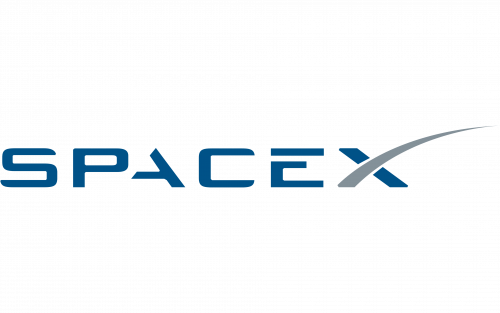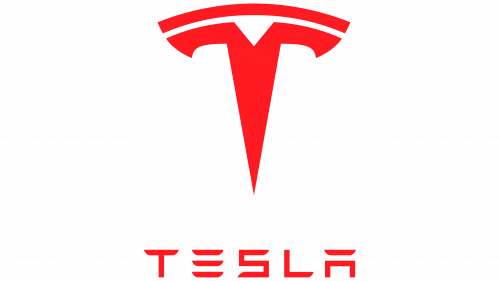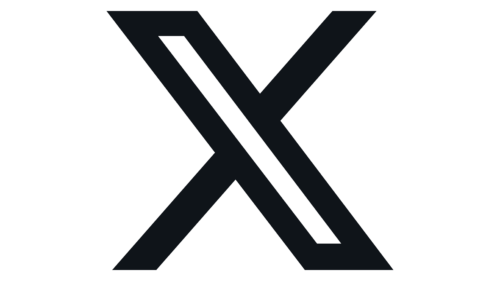Elon Musk is a man who not only brings ideas to life but also makes them work. He is the founder and CEO of several successful companies including Tesla, SpaceX, and The Boring Company.
Elon Musk’s biography is of interest to many fans of the billionaire. In the public space, he is often presented as Iron Man: millionaire, playboy, and philanthropist.
The biography of Elon Musk has several interesting facts. The formation of the entrepreneurial personality of the future billionaire began in childhood.
Elon Musk was born in 1971 in Pretoria, in the Republic of South Africa. When Elon was ten years old, his parents, a Canadian model, and a South African electrical engineer, divorced, and the children, although officially left with their mother, began to live mostly with their father in Africa.
Literally from childhood, Elon Musk was an unusual child. He was smart and curious, but he was not interested in sports or entertainment. The boy was able to immerse himself in his thoughts, so he was not recognized by his classmates. In childhood, he had to change several schools, but even this did not help him find friends and adapt to the collective.
At the age of 14, Musk had an existential crisis. He did not give rest to the question of the meaning of existence on Earth. But after reading the novel “Hitchhiker’s Guide to the Galaxy” by Adams Douglas, Elon knew for sure that his task was to save mankind. The new goal foreshadowed Elon Musk’s history as the world’s most daring inventor.
Elon graduated from high school in 1988, after which he enrolled at the University of Pretoria. At that time, South Africa was experiencing political instability. Shortly before his eighteenth birthday, he moved to Canada. After that, the most interesting and active period of his life began.
He first enrolled at Queens University in Kingston, Ontario, and two years later transferred to the University of Pennsylvania, where he earned bachelor’s degrees in physics and economics from the Wharton School. Musk later said that physics gave him a very good structure for thinking: first, to break things down to the fundamentals, and then to build on those fundamentals.
When Musk was 24, he moved to California, enrolling in a master’s program at Stanford University to study fundamental physics and conduct postgraduate research on high-energy-density capacitors.
This period coincided with the boom of the dotcoms (internet companies) and the prosperity of Silicon Valley. Elon had an entrepreneurial epiphany, and 2 days later Musk dropped out of Stanford to realize his innovative talent. From that moment on, a new round of Elon Musk’s life story began.
Musk dropped out of school and focused on his startup Zip2, which combined city maps and Yellow Pages data. The startup was partially funded by Silicon Valley investors. During the project’s development, Musk worked around the clock. Two years later, the sale of Zip2 brought Musk $22 million.
So began the “business path” of one of the richest people in modern history. And we will tell you about all the companies in which Elon Musk took part, and, of course, their logos, below.
Zip2
Zip2 is an online city guide for newspaper websites such as the New York Times, Chicago Tribune, and others. In 1999, the founders’ efforts paid off, as Compaq acquired Zip2 for $307 million in cash and $34 million for stock options. Thus, at the age of 20, Musk became a multimillionaire.
The logo of Zip2 is super cool and interesting to look at. A blue emblem depicts a running figure in the shape of a lightning bolt, with a head drawn as a flame. The image is enclosed into a black circular frame and accompanied by a slanted narrowed sans-serif lettering also in black.
X.com and PayPal
Musk invested the money he received from the sale of Zip2 in the creation of X.com, an online banking company that provides financial services and payments. A year later, Musk teams up with Peter Thiel’s financial startup Confinity to create PayPal. The company is later sold to eBay. At the time, Musk was the largest shareholder, for which he received $165 million.
Today the PayPal logo is definitely one of the most recognizable images, associated with the digitalization of our lives. The blue two-layered emblem with two overlapping solid rounded “P”s and stable lettering in the same palette looks confident and evokes a sense of trustworthiness.
SpaceX
In 2002, Musk created the space technology company SpaceX. At the moment SpaceX along with the private American company Boeing takes part in the NASA Commercial Crew Program, the purpose of which is to deliver astronauts into space. To date, this company has developed spacecraft Falcon 1, Falcon 9, Falcon Heavy, and Dragon.
The SpaceX visual identity is a perfect example of minimalistic futurism: the logo, set in a black-and-white color palette, boasts a stylized uppercase lettering in a sharp geometric sans-serif typeface with the elongated bar of the “X” stretched upright and pointed.
Tesla, Inc.
It is Elon Musk’s only publicly traded company. Contrary to popular belief, Tesla Motors was founded in 2003 by engineers Martin Eberhardt and Mark Terpening, not Musk himself. The entrepreneur joined the founders only a year later and invested some of the proceeds from the sale of PayPal. However, it was Elon who made the company what it is today.
Today the Tesla logo is known all over the globe, and for many it is still just a designer’s vision of the letter “T”, yes, it is a stylized character, but it has a deeper meaning. The emblem is a cross-sectional element of the electric motor. This design is a sign of respect for Nikola Tesla.
SolarCity
SolarCity is a solar power system design and installation company. SolarCity did not invent the solar modules themselves. However, the company has tied together and perfected a combination of functions and disciplines such as efficient assembly, economies of scale, vertical integration, and innovative financing techniques.
The SolarCity logo is quite modest: the solid green lettering on a transparent background, written in a modern sans-serif typeface with rounded contours of the characters and straight cuts of the bars. Sometimes the inscription is accompanied by a yellow emblem depicting a stylized geometric sun.
OpenAI
The goal of this OpenAI project is to create a powerful AI that will benefit all of humanity. Musk has repeatedly expressed concern about our relationship with machines in the future. He seriously believes that artificial intelligence will be the greatest existential threat to humanity and potentially even more dangerous than nuclear weapons. OpenAI does research in this area and then provides free access to it.
The OpenAI visual identity is somewhat interesting and creative. The primary version of the project’s logo is composed of just a graphical element, a flower-shaped figure, made of several intertwined lines, which resembles a swirl and represents progress and motion.
Neuralink
Neuralink is Elon Musk’s neurotechnology company. It develops and manufactures implantable neurocomputer interfaces. In July 2019, Musk unveiled the N1 brain chip. The chip is a small wireless device that is embedded in the brain to help people with dementia or paralysis. In August 2020, Neuralink presented the chip to the public, and in the spring of 2021 showed it in action for the first time: a monkey, with the help of the N1 implanted in its brain, played video games.
The Neuralink logo is a brilliant graphical depiction of the company’s essence. The stylized infinity sign with an open contour has two of the four corners rounded, and two — sharpened, with the left part of the composition extended. It is a symbol of connection and linking, inscribed into a philosophical and instantly recognizable element.
The Boring Company
The Boring Company is Musk’s business that builds tunnels. Originally a subsidiary of SpaceX, it was spun off in 2018. It is based on the concept that an urban transportation system can consist of an extensive network of car tunnels with exits to the surface. The first commercial project of this company is the construction of a high-speed underground system in Las Vegas.
The Boring Company logo is not boring at all. It is a three-leveled inscription with the “Boring” central line enlarged. All the words in the company name are executed in the uppercase of a simple geometric sans-serif typeface, in bold lines and with distinctive contours. The “O” in the main part of the inscription has no negative space, creating the main accent of the badge.
Starlink (part of SpaceX)
The Starlink system of near-Earth satellites provides access to high-speed Internet anywhere in the world. By April 2020, there were already 418 satellites in operation, and just a year later there were more than 1,300. Starlink is developing a network of satellites in Low Earth Orbit (LEO). This reduces latency and provides higher data transmission speeds than traditional geostationary satellite systems.
Since Starlink is a part of SpaceX, its visual identity is fully based on the corporate image. The clean uppercase wordmark in a medium-weight sans-serif typeface with traditional shapes of the characters is accompanied by the emblem, depicting a stylized “X”, just like the one on the SpaceX logo.
Hyperloop
The Hyperloop high-speed vacuum train is still under development today. Hyperloop was supposed to be twice as fast as an airplane and three to four times faster than a high-speed passenger train. The project is under development by both Musk himself and several competing teams.
The logo of the Hyperloop concept is executed in a laconic minimalistic style, with the graphical element inscribed into a stylized uppercase lettering executed in a geometric sans-serif typeface. The element is a three-dimensional purple and turquoise infinity sign, which replaces the two “O”s.
Thud
In 2018, Elon Musk announced another project: the intergalactic media empire Thud. The project’s leaders received $2 million from Musk, which was used to expand the team and develop the first projects. Within a year, the startup had grown to 13 people, including copywriters, developers, and artists. However, six months later, Musk stopped funding and Thud was closed.
The visual identity of this satire project, which didn’t last long, was super cute and elegant and didn’t look like any of the previous Musk’s insignias. It was an airy cursive lettering with curved elongated lines, written in a light-cream shade against a solid coral or yellow background.
Future of Life Institute
The Future of Life Institute is a non-profit organization whose work is related to reducing global risks facing humanity, including risks from artificial intelligence. Elon Musk is one of the most active supporters and sponsors of this organization.
The Future of Life Institute logo is very memorable due to the interesting composition: the badge is set in three levels, with the upper two sharing a vertical elongated bar, with works as the “T” in the “Future”, and as the “L” in the “Life”. Another thing in this badge is the second “U”, stylized as a gradient orange-to-red flame.
Tesla Energy
Tesla Energy is a division of Tesla, established in 2015, that develops and manufactures battery systems. Its peculiarity is the ability to be used both in homes and offices, as well as in enterprises. The system is available in Powerwall and Powerpack versions.
The Tesla Energy logo is fully based on the visual identity of its mother company, with the iconic T emblem and the name of the group written in red capitals under it. The “Energy” part is executed in the same font, and placed at the bottom level of the composition, separated from the top by a thin horizontal line.
Gigafactory
Gigafactories are Tesla’s huge factories where batteries for the cars produced by the company are manufactured. Before the construction of the Gigafactory, Tesla had its main production in California and also had an assembly plant in the Netherlands. The first Gigafactory was opened 30 kilometers from the city of Sparks in Nevada.
Another logo, based on the Tesla insignia is the badge of Gigafactory. The name of the manufacturing facility is written under the red Tesla badge in thin gray capitals of a lightweight sans-serif typeface with traditional contours of the characters and a lot of air between the lines.
DeepMind
DeepMind is a British artificial intelligence company. It was founded in 2010 in London under the name DeepMind Technologies. It was acquired by Google in 2014. Elon Musk was one of the company’s first investors. Over the last decade, DeepMind has gathered leading AI specialists.
Since today DeepMind is a part of the Google company, its logo is executed in the corporate style. The clean title case lettering in a simple sans-serif typeface is written whether in blue or black, against a white background, and accompanied by a circular emblem, formed by two elements, which make it resemble a swirl.
Twitter (X)
Twitter is one of the most popular social networks in the world, which was created in 2006 by Jack Dorsey, Beez Stone, and Evan Williams in San Francisco, California. Twitter’s sale to Elon Musk took place on October 27, 2022.
In April, Musk merged the company with the X Corp. he owned, abolishing Twitter’s legal entity. On July 24, 2023, Twitter changed its logo from a blue bird to a white X on a black background. Today the icon of the social media is executed in a modified color palette: the stylized “X” is drawn in orange lines against a plain black background.

























